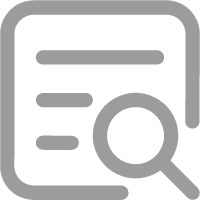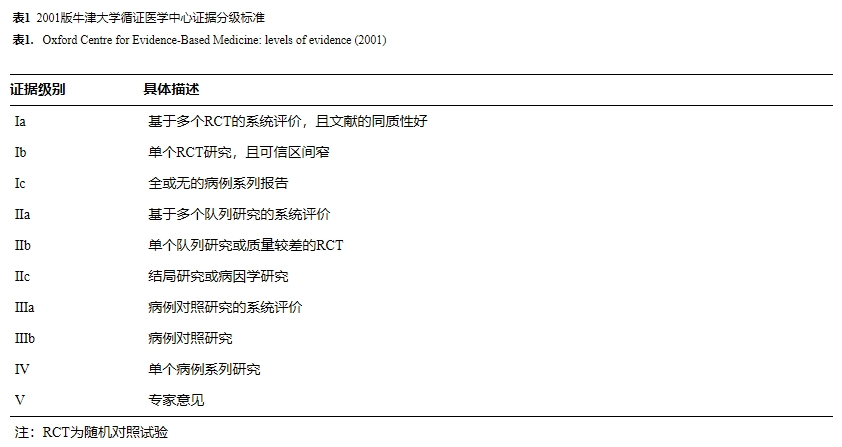Expert consensus on the management of deep partial-thickness burn wounds in pediatric patients (2023 version)
-
摘要:
烧伤是我国儿童意外伤害的主要原因。因儿童创面修复能力强及生长发育的需求,儿童深Ⅱ度烧伤创面的治疗选择较多,有关该类创面治疗策略的争议也较多。该文集合了国内外烧伤及相关领域专家,针对热力学因素所致的1~6岁儿童深Ⅱ度烧伤创面的处理,在定义与诊断、手术治疗、非手术治疗、创面覆盖物、生长因子应用、感染性创面的治疗、瘢痕防治等方面形成共识,以期为我国儿童深Ⅱ度烧伤创面的诊疗提供指导性建议。
Abstract:Burns are the leading cause of accidental injuries among Chinese children. Due to the strong wound repair ability and the demand for growth and development in pediatric patients, there are many options for the treatment of deep partial-thickness burn wounds in pediatric patients, while many controversies about the strategies for treatment of this kind of wounds also exist. This article assembled the consensus reached by experts in burns and relevant fields in China and abroad on the management of thermal-induced deep partial-thickness burn wounds in pediatric patients aged 1-6 years, including definition and diagnosis, surgical treatment, non-surgical treatment, wound dressings, application of growth factors, treatment of infectious wounds, prevention and treatment of scar, to provide guiding recommendations for the diagnosis and treatment of deep partial-thickness burn wounds in pediatric patients in China.
-
Key words:
- Burns /
- Child /
- Deep partial-thickness wounds /
- Wound management /
- Expert consensus
-
参考文献
(63) [1] ISBI Practice Guidelines Committee,SubcommitteeSteering,SubcommitteeAdvisory.ISBI practice guidelines for burn care[J].Burns,2016,42(5):953-1021.DOI: 10.1016/j.burns.2016.05.013. [2] ISBI Practice Guidelines Committee,SubcommitteeAdvisory,SubcommitteeSteering.ISBI practice guidelines for burn care, part 2[J].Burns,2018,44(7):1617-1706.DOI: 10.1016/j.burns.2018.09.012. [3] 王卫平.儿科学[M].8版.北京:人民卫生出版社,2013. [4] N.HerndonDavid.烧伤治疗学[M].5版.北京:中国科学技术出版社,2020. [5] 杨之骏,许伟石,史济湘. 烧伤治疗[M].2版.上海:上海科学技术出版社,1985. [6] 黎鳌.黎鳌烧伤学[M].上海:上海科学技术出版社,2001. [7] GravanteG,DeloguD,GiordanN,et al.The use of Hyalomatrix PA in the treatment of deep partial-thickness burns[J].J Burn Care Res,2007,28(2):269-274.DOI: 10.1097/BCR.0B013E318031A236. [8] KaźmierskiM,MańkowskiP,JankowskiA,et al.Comparison of the results of operative and conservative treatment of deep dermal partial-thickness scalds in children[J].Eur J Pediatr Surg,2007,17(5):354-361.DOI: 10.1055/s-2006-924646. [9] ShinJY,YiHS.Diagnostic accuracy of laser Doppler imaging in burn depth assessment: systematic review and meta-analysis[J].Burns,2016,42(7):1369-1376.DOI: 10.1016/j.burns.2016.03.012. [10] CirilloMD,MirdellR,SjöbergF,et al.Improving burn depth assessment for pediatric scalds by AI based on semantic segmentation of polarized light photography images[J].Burns,2021,47(7):1586-1593.DOI: 10.1016/j.burns.2021.01.011. [11] CubisonTC,PapeSA,ParkhouseN.Evidence for the link between healing time and the development of hypertrophic scars (HTS) in paediatric burns due to scald injury[J].Burns,2006,32(8):992-999.DOI: 10.1016/j.burns.2006.02.007. [12] LonieS,BakerP,TeixeiraRP.Healing time and incidence of hypertrophic scarring in paediatric scalds[J].Burns,2017,43(3):509-513.DOI: 10.1016/j.burns.2016.09.011. [13] ReschA,StaudC,RadtkeC.Nanocellulose-based wound dressing for conservative wound management in children with second-degree burns[J].Int Wound J,2021,18(4):478-486.DOI: 10.1111/iwj.13548. [14] VloemansAF,HermansMH,van der WalMB,et al.Optimal treatment of partial thickness burns in children: a systematic review[J].Burns,2014,40(2):177-190.DOI: 10.1016/j.burns.2013.09.016. [15] LauCT,WongKK,TamP.Silver containing hydrofiber dressing promotes wound healing in paediatric patients with partial thickness burns[J].Pediatr Surg Int,2016,32(6):577-581.DOI: 10.1007/s00383-016-3895-0. [16] SabaSC,TsaiR,GlatP.Clinical evaluation comparing the efficacy of aquacel Ag hydrofiber dressing versus petrolatum gauze with antibiotic ointment in partial-thickness burns in a pediatric burn center[J].J Burn Care Res,2009,30(3):380-385.DOI: 10.1097/BCR.0b013e3181a2898f. [17] 杨新发,蔡希凤,关兴涛.儿童深二度烧伤早期手术治疗总结[J].中国中西医结合儿科学,2014(3):248-249.DOI: 10.3969/j.issn.16743865.2014.03.025. [18] ChiY,YinH,ChenX,et al.Effect of precise partial scab removal on the repair of deep partial-thickness burn wounds in children: a retrospective study[J].Transl Pediatr,2021,10(11):3014-3022.DOI: 10.21037/tp-21-500. [19] 中华医学会烧伤外科学分会.磨痂术在烧伤创面中的临床应用全国专家共识(2021版)[J].中华烧伤杂志,2021,37(6):501-507.DOI: 10.3760/cma.j.cn501120-20210110-00013. [20] 黄亚川,朱秀梅,刘晓梅,等.异种脱细胞真皮基质敷料在小儿烧伤中的应用观察[J].陕西医学杂志,2016,45(9):1154-1155.DOI: 10.3969/j.issn.1000-7377.2016.09.023. [21] DesaiMH, RutanRL, HerndonDN. Conservative treatment of scald burns is superior to early excision[J]. J Burn Care Rehabil,1991,12(5):482-484.DOI: 10.1097/00004630-199109000-00016. [22] PuchałaJ,SpodarykM,JaroszJ.Oparzenia u dzieci: od urazu do wyleczenia: Wydawnictwo[M].Jerzy Jarosz, Jacek Puchała,Mikołaj Spodaryk zwiń:Wydawnictwo Uniwersytetu Jagiellońskiego,1998. [23] ČapekKD,CulnanDM,DesaiMH,et al.Fifty years of burn care at Shriners Hospitals for Children, Galveston[J].Ann Plast Surg,2018,80(3 Suppl 2):S90-94.DOI: 10.1097/SAP.0000000000001376. [24] 徐庆连 以整体理念治疗小儿特殊部位烧伤对后期功能的影响 中华医学会烧伤外科学分会 第十一届全国烧伤救治专题研讨会论文集,哈尔滨 2014 17[2023-07-30] https://d.wanfangdata.com.cn/conference/ChZDb25mZXJlbmNlTmV3UzIwMjMwOTAxEgc4OTczMDE2Ggg2dGl4a3VqZQ%3D%3D 徐庆连.以整体理念治疗小儿特殊部位烧伤对后期功能的影响[C/OL]//中华医学会烧伤外科学分会.第十一届全国烧伤救治专题研讨会论文集,哈尔滨,2014:17[2023-07-30].https://d.wanfangdata.com.cn/conference/ChZDb25mZXJlbmNlTmV3UzIwMjMwOTAxEgc4OTczMDE2Ggg2dGl4a3VqZQ%3D%3D.
[25] KraftR,HerndonDN,Al-MousawiAM,et al.Burn size and survival probability in paediatric patients in modern burn care: a prospective observational cohort study[J].Lancet,2012,379(9820):1013-1021.DOI: 10.1016/S0140-6736(11)61345-7. [26] 李泰然,李万同,庹晓晔,等.负压封闭引流技术在儿童浅Ⅱ度烧烫伤创面临床应用[J].临床军医杂志,2016(1):23-25.DOI: 10.16680/j.1671-3826.2016.01.07. [27] KoehlerS,JinboA,JohnsonS,et al.Negative pressure dressing assisted healing in pediatric burn patients[J].J Pediatr Surg,2014,49(7):1142-1145.DOI: 10.1016/j.jpedsurg.2014.02.040. [28] RenY,ChangP,SheridanRL.Negative wound pressure therapy is safe and useful in pediatric burn patients[J].Int J Burns Trauma,2017,7(2):12-16. [29] deJesus LE,MartinsAB,OliveiraPB,et al.Negative pressure wound therapy in pediatric surgery: how and when to use[J].J Pediatr Surg,2018,53(4):585-591.DOI: 10.1016/j.jpedsurg.2017.11.048. [30] FrearCC,GriffinB,CuttleL,et al.Study of negative pressure wound therapy as an adjunct treatment for acute burns in children (SONATA in C): protocol for a randomised controlled trial[J].Trials,2019,20(1):130.DOI: 10.1186/s13063-019-3223-9. [31] FrearCC,ZangT,GriffinBR,et al.The modulation of the burn wound environment by negative pressure wound therapy: insights from the proteome[J].Wound Repair Regen,2021,29(2):288-297.DOI: 10.1111/wrr.12887. [32] PedrazziNE,NaikenS,La ScalaG.Negative pressure wound therapy in pediatric burn patients: a systematic review[J].Adv Wound Care (New Rochelle),2021,10(5):270-280.DOI: 10.1089/wound.2019.1089. [33] 中华医学会烧伤外科学分会,《中华烧伤杂志》编辑委员会.负压封闭引流技术在烧伤外科应用的全国专家共识(2017版)[J].中华烧伤杂志,2017,33(3):129-135.DOI: 10.3760/cma.j.issn.1009-2587.2017.03.001. [34] HylandEJ,D'CruzR,MenonS,et al.Prospective, randomised controlled trial comparing Versajet™ hydrosurgery and conventional debridement of partial thickness paediatric burns[J].Burns,2015,41(4):700-707.DOI: 10.1016/j.burns.2015.02.001. [35] 李梦芸,毛远桂,郭光华,等.水动力清创系统在各类烧伤创面清创手术中的应用[J].中华烧伤杂志,2016,32(9):574-576.DOI: 10.3760/cma.j.issn.1009-2587.2016.09.014. [36] Gee KeeE,KimbleRM,CuttleL,et al.Comparison of three different dressings for partial thickness burns in children: study protocol for a randomised controlled trial[J].Trials,2013,14:403.DOI: 10.1186/1745-6215-14-403. [37] SelvarajahD,BolluBK,HarveyJ,et al.Acticoat versus biobrane: a retrospective review on the treatment of paediatric mid-dermal torso burns[J].Int J Burns Trauma,2019,9(4):82-87. [38] CuttleL,NaiduS,MillJ,et al.A retrospective cohort study of Acticoat versus Silvazine in a paediatric population[J]. Burns,2007,33(6):701-707.DOI: 10.1016/j.burns.2007.02.012. [39] FraserJF,CuttleL,KempfM,et al.Cytotoxicity of topical antimicrobial agents used in burn wounds in Australasia[J].ANZ J Surg,2004,74(3):139-142.DOI: 10.1046/j.1445-2197.2004.02916.x. [40] 刘琰,张杰.浅谈小儿深Ⅱ度烧伤创面的处理[J].中华烧伤杂志,2021,37(8):797-800.DOI: 10.3760/cma.j.cn501120-20200512-00261. [41] 海峡两岸医药卫生交流协会烧创伤暨组织修复专委会.氧化亚氮与氧气混合吸入镇静镇痛技术在烧伤外科应用的专家共识(2021版)[J].中华烧伤杂志,2021,37(3):201-206.DOI: 10.3760/cma.j.cn501120-20200523-00284. [42] DaviesMR,RodeH,CywesS,et al.Burn wound management[J].Prog Pediatr Surg,1981,14:33-61. [43] 过云,蔡良良,虞俊杰,等.无菌生物护创膜治疗小儿深Ⅱ度烧伤创面的临床观察[J/CD].中华损伤与修复杂志(电子版),2013,8(1):56-57.DOI: 10.3877/cma.j.issn.1673-9450.2013.01.016. [44] Gee KeeEL,KimbleRM,CuttleL,et al.Randomized controlled trial of three burns dressings for partial thickness burns in children[J].Burns,2015,41(5):946-955.DOI: 10.1016/j.burns.2014.11.005. [45] BowlerPG,JonesSA,WalkerM,et al.Microbicidal properties of a silver-containing hydrofiber dressing against a variety of burn wound pathogens[J].J Burn Care Rehabil,2004,25(2):192-196.DOI: 10.1097/01.bcr.0000112331.72232.1b. [46] WuJJ,ZhangF,LiuJ,et al.Effect of silver-containing hydrofiber dressing on burn wound healing: a meta-analysis and systematic review[J].J Cosmet Dermatol,2023,22(5):1685-1691.DOI: 10.1111/jocd.15639. [47] WangJ,YangB,ZhangXH,et al.The effectiveness of silver-containing hydrofiber dressing compared with topical silver sulfadiazine cream in pediatric patients with deep partial-thickness burns: a retrospective review[J].Wound Manag Prev,2022,68(3):29-36.DOI: 10.25270/wmp.2022.3.2936. [48] 高优,李金虎,郭志谦,等.亲水纤维含银敷料在小儿头面部深Ⅱ度烧伤创面治疗中的应用[J].中国美容整形外科杂志,2017,28(8):485-487.DOI: 10.3969/j.issn.1673-7040.2017.08.013. [49] 许伟石,刘琰,乐嘉芬.烧伤创面修复[M].2版.武汉:湖北科学技术出版社,2013. [50] 宋德恒,李勇,刘继松,等.银离子藻酸盐敷料在儿童四肢深Ⅱ度烧伤创面中的应用效果观察[J].感染、炎症、修复,2016,17(4):199-202.DOI: 10.3969/j.issn.1672-8521.2016.04.002. [51] 陈郑礼,伍国胜,朱世辉,等.藻酸盐敷料及聚氨酯泡沫敷料治疗大面积烧伤患者头部供皮区创面的疗效观察[J].中华烧伤杂志,2015,31(2):135-137.DOI: 10.3760/cma.j.issn.1009-2587.2015.02.014. [52] ErolS,AltoparlakU,AkcayMN,et al.Changes of microbial flora and wound colonization in burned patients[J].Burns,2004,30(4):357-361.DOI: 10.1016/j.burns.2003.12.013. [53] KlasenHJ.A historical review of the use of silver in the treatment of burns. II. Renewed interest for silver[J].Burns,2000,26(2):131-138.DOI: 10.1016/s0305-4179(99)00116-3. [54] LuLC,ChangFY,LvGZ,et al.Effectiveness and safety of compound polymyxin B ointment in treatment of burn wounds: a meta-analysis[J].J Burn Care Res,2022,43(2):453-461.DOI: 10.1093/jbcr/irab099. [55] MaloneM,JohaniK,JensenSO,et al.Effect of cadexomer iodine on the microbial load and diversity of chronic non-healing diabetic foot ulcers complicated by biofilm in vivo[J].J Antimicrob Chemother,2017,72(7):2093-2101.DOI: 10.1093/jac/dkx099. [56] JeschkeMG,van BaarME,ChoudhryMA,et al.Burn injury[J].Nat Rev Dis Primers,2020,6(1):11.DOI: 10.1038/s41572-020-0145-5. [57] HeynemanA,HoeksemaH,VandekerckhoveD,et al.The role of silver sulphadiazine in the conservative treatment of partial thickness burn wounds: a systematic review[J].Burns,2016,42(7):1377-1386.DOI: 10.1016/j.burns.2016.03.029. [58] 中国临床瘢痕防治专家共识制定小组.中国临床瘢痕防治专家共识[J/CD]. 中华损伤与修复杂志(电子版),2017,12(6):401-406.DOI: 10.3877/cma.j.issn.1673-9450.2017.06.001. [59] 中国整形美容协会瘢痕医学分会.瘢痕早期治疗全国专家共识(2020版)[J].中华烧伤杂志,2021,37(2):113-125.DOI: 10.3760/cma.j.cn501120-20200609-00300. [60] AkitaS,AkinoK,ImaizumiT,et al.The quality of pediatric burn scars is improved by early administration of basic fibroblast growth factor[J].J Burn Care Res,2006,27(3):333-338.DOI: 10.1097/01.BCR.0000216742.23127.7A. [61] 梁自乾,黎洪棉,蒙诚跃.重组人表皮生长因子对儿童面部非Ⅲ度烧伤创面的修复[J].中国组织工程研究与临床康复,2007,11(10):1974-1975.DOI: 10.3321/j.issn:1673-8225.2007.10.055. [62] 郑中柱,刘杰锋,谢卫国,等.重组人表皮细胞生长因子在小儿Ⅱ度烧伤创面的应用[J].华中科技大学学报(医学版),2003,32(6):667-668.DOI: 10.3870/j.issn.1672-0741.2003.06.032. [63] NinanN,ForgetA,ShastriVP,et al.Antibacterial and anti-inflammatory pH-responsive tannic acid-carboxylated agarose composite hydrogels for wound healing[J].ACS Appl Mater Interfaces,2016,8(42):28511-28521.DOI: 10.1021/acsami.6b10491. -
表1 2001版牛津大学循证医学中心证据分级标准
表1. Oxford Centre for Evidence-Based Medicine: levels of evidence (2001)
证据级别 具体描述 Ⅰa 基于多个RCT的系统评价,且文献的同质性好 Ⅰb 单个RCT研究,且可信区间窄 Ⅰc 全或无的病例系列报告 Ⅱa 基于多个队列研究的系统评价 Ⅱb 单个队列研究或质量较差的RCT Ⅱc 结局研究或病因学研究 Ⅲa 病例对照研究的系统评价 Ⅲb 病例对照研究 Ⅳ 单个病例系列研究 Ⅴ 专家意见 注:RCT为随机对照试验 -
 2097-1109-39-10-001_en.pdf
2097-1109-39-10-001_en.pdf

 刘琰共识完整版~1.mp4
刘琰共识完整版~1.mp4

-








 下载:
下载:






